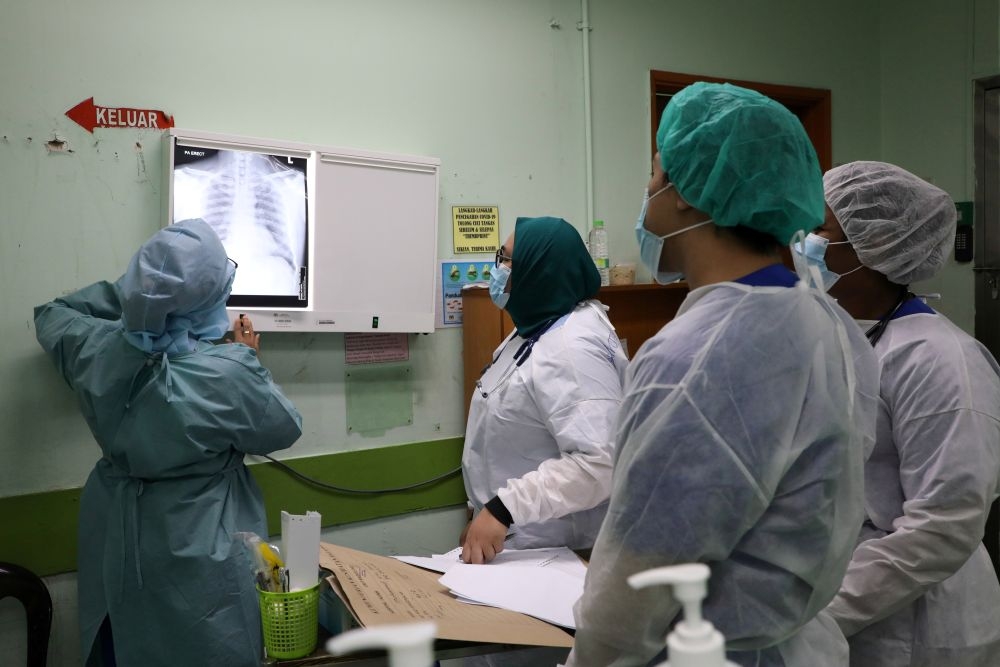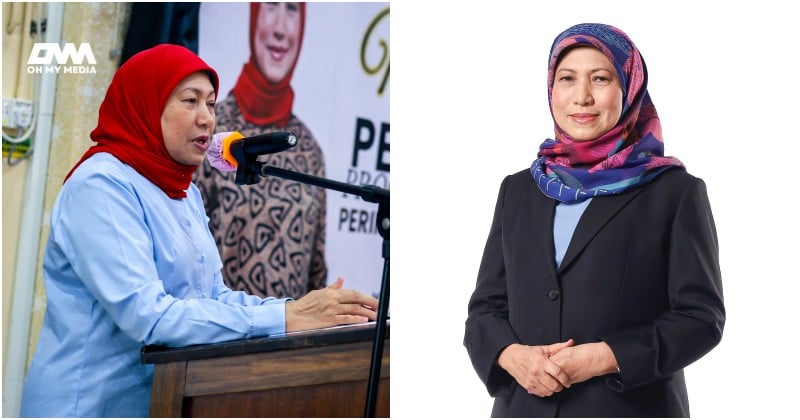JULY 1 — Malaysia’s decades-long discussion on sustainable healthcare financing saw a new development with the emergence of a government proposal to allow withdrawals from the Employees Provident Fund (EPF) to pay for private health insurance. Though additional details are still forthcoming, it is possible to discuss what is being proposed.
The proposed MHIT (medical health insurance and takaful) initiative appears to be an adaption of existing Bank Negara Malaysia (BNM) and EPF programmes which aimed to encourage low income Malaysians to invest in life and critical illness policies, Perlindungan Tenang and i-Lindung respectively. i-Lindung specifically involves integrating protection products into EPF retirement savings.
The Perlindungan Tenang programme, providing micro-insurance and takaful products through more than 2 dozen insurance and takaful industry players and targeting lower incomes and rural areas, has been around since 2017. These are priced as low as RM30 annually providing limited but affordable protection. The use of subsidised RM 50–75 vouchers to purchase Tenang products resulted in the number of policyholders increasing from 40,000 to 4 million within a year. However, the Madani government ended the voucher programme in June 2023 after noting though the subsidy cost was RM 200 million, there were a low number of claims from policyholders. It is not known how many are still participating in this programme today.
The methodology of using EPF’s Account 2 for purchasing insurance and takaful products is not new. EPF members’ contributions are now divided into a 75:15:10 ratio across Account 1 (Retirement Account), Account 2 (Sejahtera Account) and the Flexible Account respectively. As of September 2024, the i-Lindung initiative, introduced in July 2022, saw more than RM 44.2 million being withdrawn from Account 2 by 144,589 EPF members to purchase life and critical illness insurance. Automatically deducted, the premiums are as low as RM30 annually with coverage up to RM200,000 for critical illnesses. Uptake was below expectations.
Unfortunately, the proposed MHIT initiative is not as straightforward as offering coverage for life and critical illness. Health insurance premiums were specifically increased of late to address high medical claims. These were described as spiralling out of control due to large numbers of patients utilising their policies particularly since the COVID-19 crisis, unregulated billing by private hospitals, increase in the cost of medical consumables, medicines and services, as well as the volatile foreign currency exchange.
MHIT operators offering a basic medical plan that helps pay your hospital bills will likely utilise existing products which look like this: a monthly premium of around RM 40, a medical cover with an annual limit of up to RM 150,000, and a deductible (which must be paid by you for each hospitalisation before any benefits kick in) of at least RM 1,000.
So is this a bad idea?
On the surface, it sounds pragmatic by letting people tap into their own savings to purchase basic health insurance to bridge the gap in healthcare coverage and protection from financial catastrophe. With rising healthcare costs, especially in the private sector, many Malaysians feel squeezed between inadequate public services and unaffordable private care.
This initiative theoretically has the potential to shift patients from being fully dependent on public hospitals, reduce pressure on government spending, and include private health services as a viable choice. The latter are often perceived to be less affordable and accessible to those of lower income. This proposal, which is not mandatory but optional, also provides some form of financial protection and means to pay for that access. It provides greater freedom of choice, immediate relief from out-of-pocket health expenses, and an option for those seeking faster access to treatment.
But at what cost?
A deeper look reveals several fundamental problems in this initiative. This move risks adding on to the erosion of the very foundation of retirement security, while failing to address the structural cracks in our healthcare system.
In 2023, Anwar Ibrahim himself as Finance Minister warned that 51% of Employees’ Provident Fund (EPF) members or 6.7 million contributors under the age of 55 had less than RM 10,000 in their savings. As of August 2024, that number has reduced to 33%. Low EPF savings and not having enough for retirement among lower income earners were the costs of the i-Lestari, i-Sinar and i-Citra withdrawals. The situation has improved since then but not by much.
The EPF is the bedrock of retirement for most Malaysians. At present, most contributors already struggle to accumulate enough for a dignified old age. According to EPF’s own data, only 18% of members have adequate savings to sustain themselves through retirement. The basic savings benchmark, the minimum amount needed for retirement, which is currently at RM240,000 will also be increased to RM 390,000 reflecting increases in the cost of living. For many, their EPF account is the sole bulwark against poverty in old age. Based on EPF’s Belanjawanku 2024/2025, a single elderly person requires approximately RM2,690 monthly to maintain a reasonable standard of living in retirement. Old-age poverty is both a real risk, and an everyday reality for many.
Diverting savings to pay insurance premiums risks making a dire situation worse, regardless of the fact that it comes from Account 2. Each ringgit withdrawn today is one less for tomorrow. Implying that they won’t notice the withdrawal as it is automatic and coming from the Sejahtera account, is dangerous, encourages financial illiteracy and is disconnected from the Rakyat’s everyday realities.
The reality is that medical insurance premiums will also rise sharply with age, the coverage will change, and the protection offered by many products is often riddled with exclusions (such as pre-existing conditions, pregnancy, mental health), lifetime caps, and non-covered treatments. There is no guarantee that these basic policies will offer genuine protection when it is needed most. The justification used will likely be better with some protection, than none at all.
Unfortunately, the proposal does nothing to address the root causes of rising healthcare costs or the inefficiencies plaguing both the public and private sectors. It simply shifts the financial burden onto individuals, expecting them to shoulder risks that should rightly and properly be managed through collective mechanisms and policy reform.
Who benefits from this proposal?
The government could argue that the proposal should be allowed a chance to succeed as it would benefit those of lower income. However, a look at the previous experience from the Perlindungan Tenang and i-Lindung initiatives give a clear sign of where this MHIT programme will go.
As of early 2025, the EPF has over 16.3 million members. However, approximately 8.78 million are considered active contributors. The top 20 per cent, defined as EPF account holders with an average balance of RM 279,000 in their savings, hold over 82 per cent of total EPF savings, the middle 40 per cent are at 16 per cent, while the bottom 40 per cent constitute barely 1 per cent of total savings with a median of RM 1,063 in their accounts.
How likely will the MHIT initiative involve the participation of the bulk of contributors? Past evidence indicates that most will likely opt-out. After all, retirement savings should not be a resource to be experimented upon.
A worrying perspective has been raised during the course of this debate: higher income individuals should utilise the private healthcare system while the government hospitals and clinics should be reserved for those who are poor or of lower income. This view should be rejected. Besides being simplistic, harmful and classist, it ignores the strengths, gaps and universality of the Malaysian healthcare system.
The private healthcare system is excellent but not all encompassing. It is a business after all, and there are limits to what is available. Often, patients with complex and chronic cases (read: expensive) are referred to government hospitals for follow up and long term care. There are many treatments, and medicines such as those for infectious diseases and rare conditions which are not available in the private space. Much of the specialised expertise such as clinical immunologists and geneticists are also concentrated in government facilities. Malaysia’s public health system has some of the world’s leading experts in their fields.
This MHIT initiative is likely to be short-term and may benefit the insurance and takaful industry far more than ordinary Malaysians. Insurers stand to gain from a new stream of premium-paying customers, effectively subsidised by workers’ own retirement savings. Meanwhile, the risk is offloaded onto the public: those who run out of savings will eventually fall back on the public system, but with even fewer resources for their old age.
It also raises equity concerns and could deepen the healthcare and retirement divide. The proposal favours those who already have substantial EPF savings, while the most vulnerable, with little in their accounts, may be left behind. The government recognised this vulnerability when it introduced the subsidised voucher scheme for Tenang.
Whether a patient’s insurance coverage has reached its limits or treating an infectious disease or rare condition, Malaysians may resort to accessing and depending on the public healthcare system regardless. It is, after all, Malaysia’s healthcare safety net.
If not this initiative, what then?
Malaysia needs a better way forward. A sustainable, equitable health financing reform model that strengthens the public system, expands social health insurance, and ensures that no one faces catastrophic health costs or impoverishment in old age.
The use of the EPF as a platform for healthcare financing is good, but it should not be used to pay private insurers for basic health products. It should instead be used to raise and increase financial resources available for healthcare through national health and social insurance, covering protection for both health and aged care.
Earmarking federal government revenue is not permitted under Article 97 the Federal Constitution which stipulates that all collected funds must be paid into the Federal Consolidated Fund. However, using the EPF to collect earmarked funds, such as Singapore did with its Central Provident Fund back in the early 1980s, could be used instead to introduce and sustain national health and social insurance. This approach should be the way forward.
This proposal would not use people’s existing retirement savings. Instead, it proposes to increase the level of contribution by both worker and employer which would then be earmarked for national health and social insurance. These funds would complement and not replace the existing annual allocation under the Federal Budget, potentially bringing in new and sustainable funding.
Through pooling of risk and resources, as well as distribution of costs, coverage through this proposal would provide subscribers to the national health and social insurance with access to both public and private healthcare, no exclusions for pre-existing conditions, no costly deductibles, affordable co-payments if necessary, expand and increase investment in improving existing health services in government hospitals, and afford lifesaving medicines and treatment which would otherwise be out of reach of individuals. It would include, not exclude those who are older, aged 60 years and above, ensuring that they receive necessary care. This is the way.
However, there is currently a major trust deficit to overcome. The public’s trust in implementing such an initiative cannot be assumed and must be earned through transparency, consultation and continuous engagement. The era of government knows best is over.
We need to introduce and invest in meaningful reforms which improve access and quality in public hospitals, reform payment systems, and explore universal health coverage options, not draining or sipping at retirement savings to plug holes elsewhere.
The temptation to reach into EPF savings for short-term relief is understandable, but it is ultimately self-defeating. Policymakers must resist the urge to mortgage our future for today’s convenience. The retirement security of Malaysians must be protected and investments in health reforms made that serve everyone.
*This is the personal opinion of the writer or publication and does not necessarily represent the views of Malay Mail.







